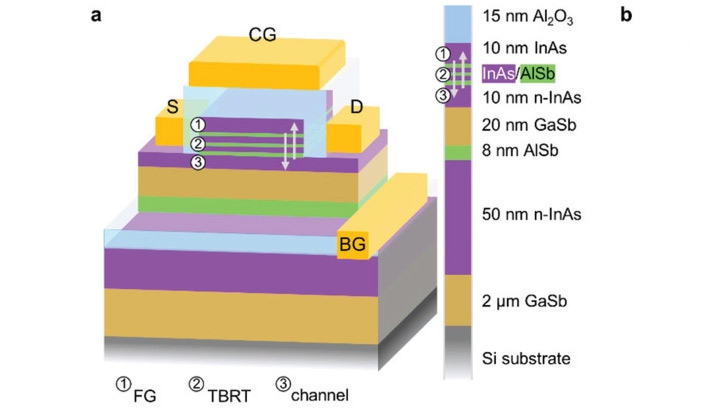
Quinas Technology, a startup working to bring the UltraRAM technology to mass production one day and which demonstrated the first chips last year, this week received £1.1 million ($1.43 million) funding from Innovate UK to accelerate the technology's transition from the lab to the fab, reports ElectronicsWeekly.com.
UltraRAM, developed by Lancaster physics professor Manus Hayne some four or five years ago, is a non-volatile type of memory that features DRAM's performance, durability, and energy efficiency. UltraRAM retains data even after power is removed, and the company claims it has at least 4,000X more endurance than NAND and can store data for 1,000+ years.
To offer its unique properties, UltraRAM relies on quantum resonant tunneling used in photonic devices such as LEDs, laser diodes, and infrared detectors but not mass-produced electronic devices. From a semiconductor device perspective, UltraRAM is a compound device featuring GaSb, InAs, and AlSb layers deposited on top of each other using the molecular beam epitaxy (MBE) method, which has never been used for memory production (at least not outside of academia).
"We are delighted that Innovate UK is supporting this ambitious project, and that IQE has committed to developing the first part of UltraRAM mass production," said professor Hayne. "This latest award takes the total of our grant funding up to £4 million."

The main objective of this one-year project is to increase the UltraRAM wafer sizes from 75 mm, produced at Lancaster, to 150 mm at IQE, a British semiconductor company that owns Quinas. This will be achieved using metal-organic chemical vapor deposition (MOCVD) rather than the molecular beam epitaxy (MBE) commonly used in academic settings. The report says IQE will use most of the project funding to transition the compound semiconductor layers developed at Lancaster University to a scalable industrial process at its Cardiff-based facility.
A significant part of this development involves IQE enhancing its ability to grow the compound semiconductors GaSb and AlSb. Lancaster University will do an initial MBE epitaxy to establish a benchmark for industrial growth, and then IQE will manufacture these semiconductors on a larger scale. Lancaster will assess the quality and characteristics of the produced material.
Concurrently, Lancaster University will work on reducing the size of individual UltraRAM devices and creating larger arrays. This process aims to eventually demonstrate the feasibility of fabricating UltraRAM on an entire 200-mm wafer, which is not enough to compete against 3D NAND and DRAM commercially, but it could be used as a proof of concept.
"It is estimated that the global memory chip market will be worth about $320 billion by 2030, but the UK currently has no stake in it," said James Ashforth-Pook, CEO and co-founder of Quinas. "Future compute will place ever-increasing demands on memory capability, driven by emerging applications like novel AI and quantum compute, as well as evolution in more traditional markets like defence and aerospace. UltraRAM's unique combination of non-volatile storage and rapid access memory addresses many of those needs, offering the potential for huge energy savings and carbon emission reduction."







